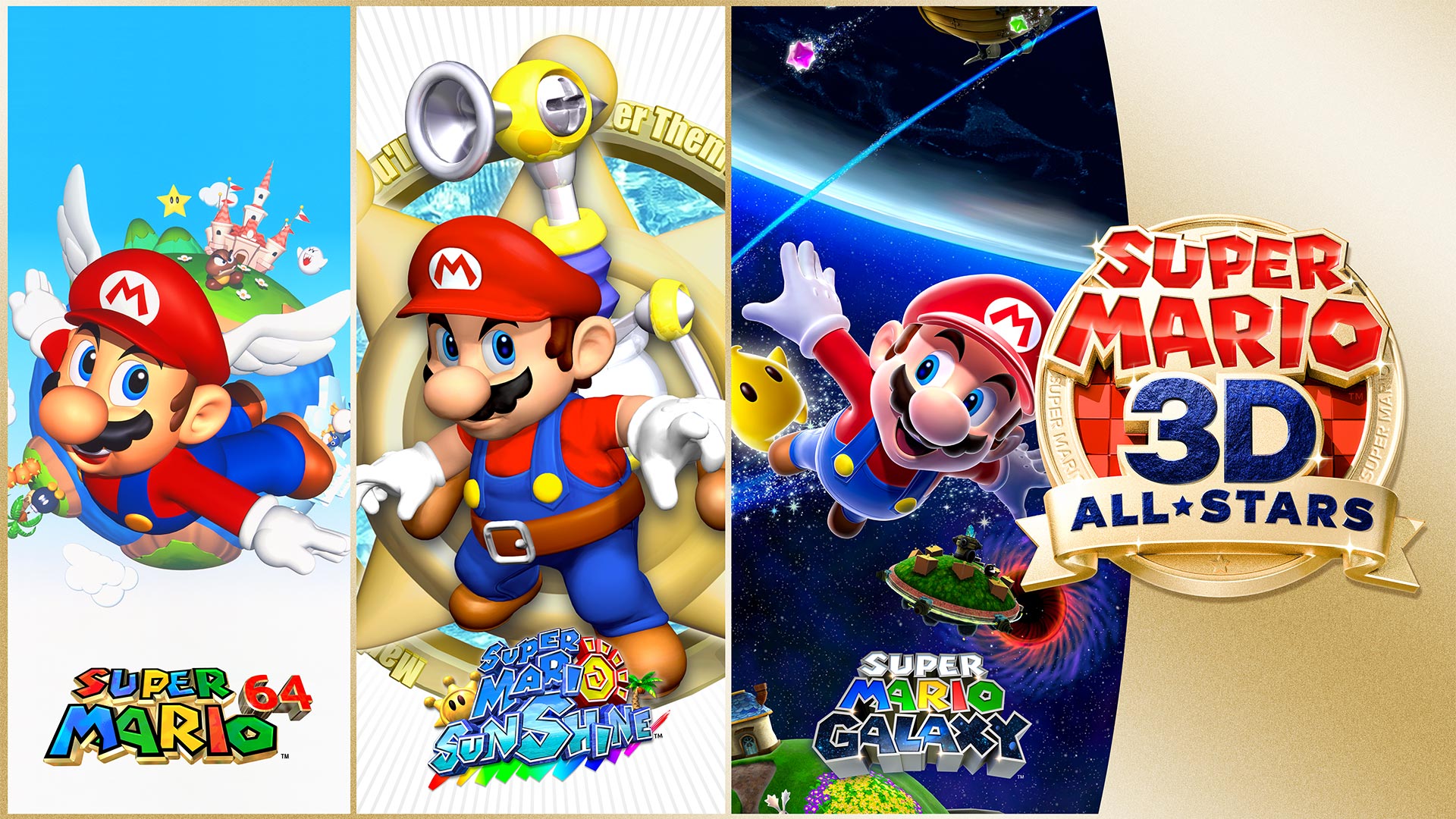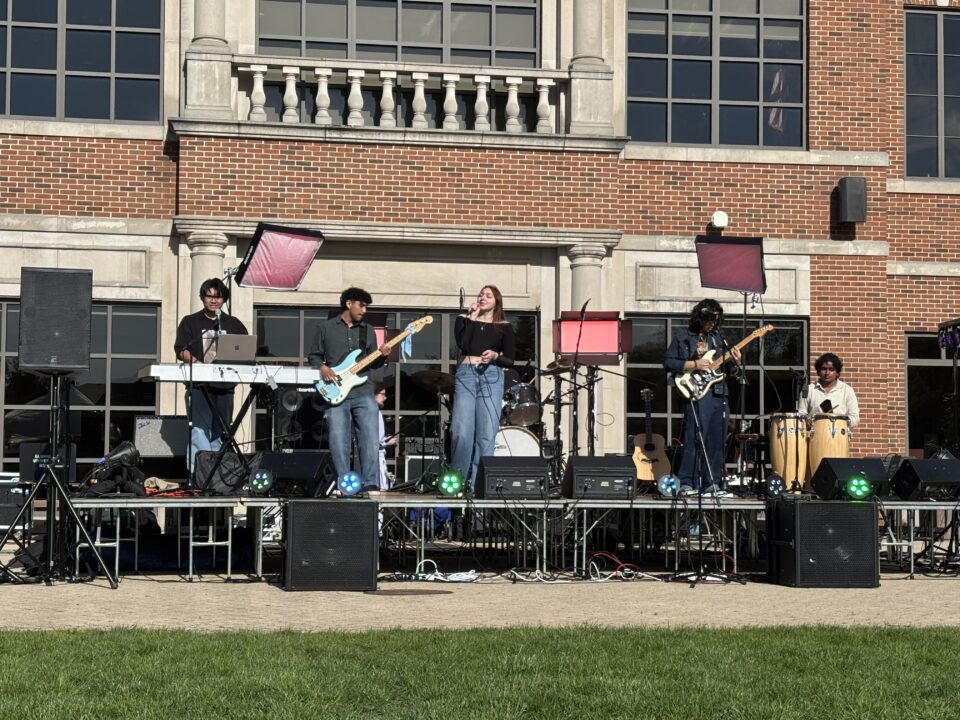Super Mario 3D All-Stars brings immense joys and nostalgia

Internet photo
Rating: 4 out of 5
“Super Mario 64,” “Super Mario Sunshine,” and “Super Mario Galaxy” all managed to be standouts in years with vast catalogs of instant classics. The three Marios in this 35th Anniversary Compilation for Nintendo Switch are important titles that are being packaged together for full-price on store and eShop shelves, but in a cringey attempt at raking in as much cash as possible, Nintendo has put a FOMO-inducing time limit on how long the collection will be available to buy (you have until the end of March 2021). This is slimy because they are not-so-gently nudging everybody who is simply thinking about buying the collection to hurry up and purchase it, or else the decision will be made for them.
That smack of desperation is the most unattractive thing about this release. Add to it the fact that the presentation is flaccid. When you load “3D All-Stars” up, it exerts zero effort to transport you. You get a brief jingle from “Mario Galaxy” then are abruptly brought to the selection screen. You also have the option to listen to the Koji Kondo soundtracks, which is… Okay? Obviously, the music is legendarily beautiful and catchy, but let’s acknowledge how nobody boots up their Switch on a Friday night for the sole purpose of blasting decades-old Mario music they’ve already looped a billion times on YouTube.
So how do these “All-Stars” hold up in 2020?
Starting from the first, I sometimes enjoyed “Super Mario 64” (1996). Everything had charm-sprinkles on it; a bounciness to all the sights and sounds. These stages, these songs, these labyrinthine settings continually urge you to discover, play, and push Mario to his limit, even though Mario’s limit becomes apparent as soon as you reach the higher-stages of each level.
The controls and camera are broken by modern standards. As more gymnastic efforts were required of Mario to get the tougher stars, cameraman Laiku made it his goal to drive me insane with his dull “erm erm” sound everytime I tried to maneuver the camera. This hindrance kneecapped my momentum every other second.
And then there’s the controls. Too often when I was on narrow ledges or gangplanks, I had to put Mario in the prone position to turn him around, because steering him with even the gentlest analog-stick-flick makes this clumsy bastard swerve to his death. Even with all the necessary concessions you have to make to a 24-year-old game, this is decidedly un-Mario behavior.
I’ve been talking to people who grew up with “64” about my deflating experience. I prod them for some secret answer to understanding the game, but even fans won’t deny its age-apparent issues: they love it because it is inextricably linked to who they are, not because it actually deserves to be championed as an enduring feat of gameplay.
“Super Mario Sunshine” is where things get interesting. Visually, this is the most fascinating game of the bunch. It is a bizarre, challenging, wonderful experience.
It shares the bones of its predecessor: the three-jump super-flip, the backflip, the dive, the wall-jump. But the handling is so much smoother, and wielding the robot-water-shooter on Mario’s back (F.L.U.D.D., one of Nintendo’s finest moments & worst jokes) is endlessly satisfying. I was doing my best to make quick time of these games so I could write my review, but there were so many points I lost myself simply exploring the maps (especially the groovy hub world, “Delfino Plaza”), all of which are bursting with good vibes. And that’s the beauty of it: “Sunshine” shows you its best hand from the get-go, and rewards you with surprises and tools the more you play it. Every time you start it up will be a good time, even 18 years later.
The boss battles are undeniably repetitive, but that’s the only thing I would call repetitive in this game. It follows “Mario 64’s” formula of adding a new purpose to the same map in order to get a new Star/Shine Sprite, but it drops the previous game’s infuriating, head-scratching system of expecting you to know what to do just by reading the name of the level. Conversely, at the start of every level “Sunshine” gives you a visual cue for where you’re supposed to go, one that fills the player with excitement and boosts the replayability tenfold.
“Sunshine” was anchored to a financial floater of a system, but like the GameCube as a whole, it is an astonishing, original invitation to have fun. But speaking of the GameCube, “Sunshine” for the Switch is not compatible with that console’s controllers. This is likely to rub some longtime fans the wrong way. Any folks who want to experience a personal favorite in as familiar a fashion as possible may want to just stick with their original copy.
Finally, we have “Super Mario Galaxy” (2007). After spending so many hours with the unrelatable “64” and the sometimes cruelly difficult “Sunshine” (for all the myriad pleasures, those “Secret Stages” are satanic), “Super Mario Galaxy” is the gaming equivalent of having somebody tell you they love you.
Every player who cherishes a title that is almost as old as them will tell you the same thing: graphics don’t matter, gameplay does. If improving upon “64’s” limitations was the motto for “Sunshine’s” production, endless variety was “Galaxy’s.” The baffling fact that this game doesn’t look nearly as gorgeous as “Sunshine” isn’t even a complaint, but a testament to what an incredible, addictive stand-alone experience “Galaxy” is.
Playing this old Wii game with a next-tech Pro Controller is a slick ride. There were levels that looked threatening, but I was relieved and delighted by the ease of movement with the Pro Controller, like when I had to motion-control Mario as he ran atop a Monkey Ball-thing on a platform full of holes. So the motion controls are tip-top, and if you want to play it handheld, you can tap the screen to catch starbits. If you’re not on public transit, this is more convenient than it sounds.
There are so many levels, so many unique boss fights, so many star-bits to wave the controller at (which, so many hours later, still hasn’t gotten old for me), so many curious challenges and artistic leaps forward that the age totally drips away from “Galaxy.” This is a ride whose scale for failure isn’t financial, but whether or not you valued the moments it gave you. 13 years later, I think you still will.
The best part of this collection is seeing how each game learned and evolved from the last, never appearing like a clone but a cosmic leap forward. Overall, having this collection in your library is a great idea if you don’t own these games — there are still many immense joys to be had — but if you already do, I don’t see the point in buying them again just because Nintendo told you to.


